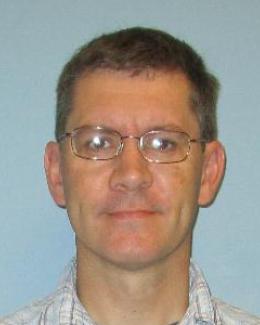For more than half a century, the 1,000-foot-diameter spherical reflector dish at the Arecibo Observatory in Puerto Rico was the largest radio telescope in the world. Completed in 1963, the dish was built in a natural sinkhole, with the telescope’s feed antenna suspended 500 feet above the dish on a 1.8-million-pound steel platform. Three concrete towers and more than 4 miles of steel cables supported the platform.
Primarily used for research in radio astronomy, atmospheric science and radar astronomy, the telescope’s unique and futuristic design led to it being the site of the climactic fight scene in the 1995 James Bond film, “GoldenEye.” In the film, after a struggle with Agent 007, the villain “slips” from Bond’s grasp and is ultimately done in when the platform falls on him.
Twenty-five years later, on December 1, 2020, it was the cable wires that slipped and caused the platform to collapse in real life. Fortunately, nobody was hurt during that incident, but it did lead to the telescope’s untimely demise.
After the collapse, a forensic investigations firm, Thornton Tomasetti, was hired by the observatory’s operator, the University of Central Florida under agreement with the National Science Foundation. As part of the investigation, Adrian Brügger, director of Columbia University’s Robert A. W. Carleton Strength of Materials Laboratory, performed neutron imaging on some of the failed cable sockets at Oak Ridge National Laboratory’s High Flux Isotope Reactor, or HFIR.
“Neutrons are ideal for forensic engineering studies, as they can penetrate nondestructively deep inside metals and other dense materials to find defects — even before a failure occurs,” said Brügger. “In studying cross sections of the cable sockets from the Arecibo site, we were able to document which individual wires slipped and the amount of slippage for each wire, even those still buried inside the zinc-filled sockets.
“Doing so noninvasively without mechanically disturbing the socket cross section was important so as not to alter the system’s as-found configuration,” he added.

Inside the failed sockets, the zinc casting that held the cable wires in place experienced significant material flow, or creep, allowing some of the wires to slip.
The neutron imaging revealed that the zinc flowed slowly under stress when the splayed-out cable wires alone could no longer resist the tension on the cables. The sockets failed because the zinc continued to flow until the cables entirely pulled out of the sockets.
“Our analysis detected significant slippage of wires in the region of interest, on the order of multiple wire diameters,” Brügger said. “This indicates that the wires slipped at some point, but it cannot be surmised whether this slipping occurred during the structural failure event or before.”
Although the final report by the forensic engineers concluded that other natural forces had only a negligible effect on the collapse, the earthquakes and hurricanes that impacted Puerto Rico over the years do generally add dynamic loading on such structures. “I suppose you could say the telescope at Arecibo had been shaken and stirred by those events,” Brügger quipped, alluding to James Bond’s favorite drink.
HFIR’s MARS CG-1D instrument, formerly named IMAGING, was used to perform high-penetration neutron imaging of the samples.
Like X-ray imaging, neutron imaging is very useful in the field of nondestructive testing. Neutrons, however, are ideal for tasks that are difficult or impossible for conventional X-ray imaging, including studying light elements, such as hydrogen and carbon. Neutrons can also penetrate heavy metals, such as lead and titanium, facilitating the study of complex engineering materials in a wide range of sample environments.
The Thornton Tomasetti report, which includes the neutron analyses, states the two cable failures that occurred before the collapse and the third cable failure that triggered the collapse all happened near or inside zinc-filled sockets at cable ends. Each failure involved both the rupture of some of the cable’s wires and a deformation of the socket’s zinc, and was therefore a failure of the cable/socket assemblies.
HFIR is a Department of Energy Office of Science user facility.
UT-Battelle manages ORNL for DOE’s Office of Science, the single largest supporter of basic research in the physical sciences in the United States. The Office of Science is working to address some of the most pressing challenges of our time. For more information, please visit energy.gov.







